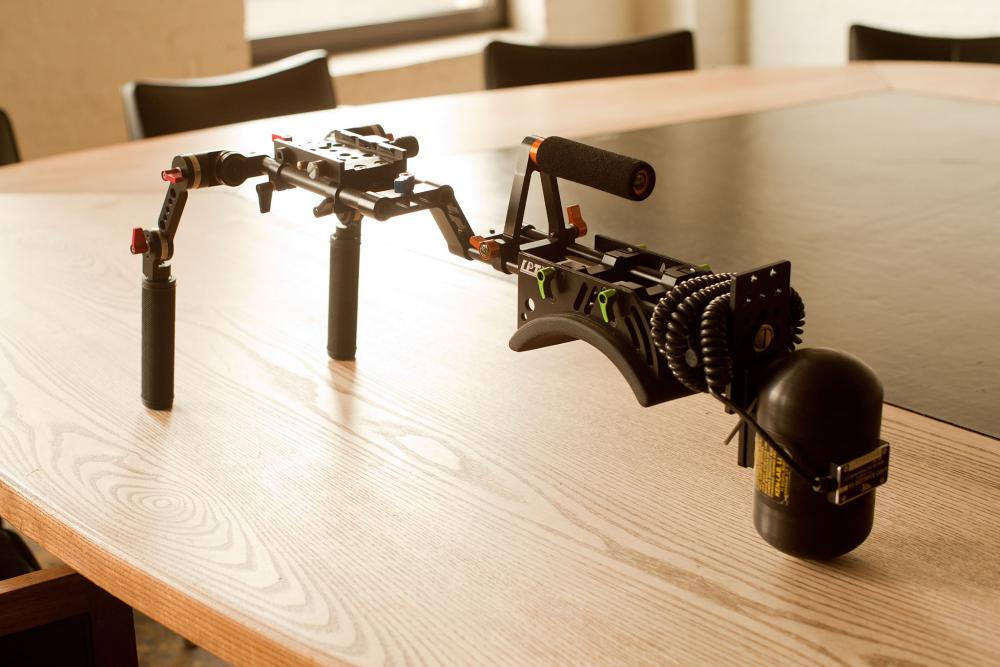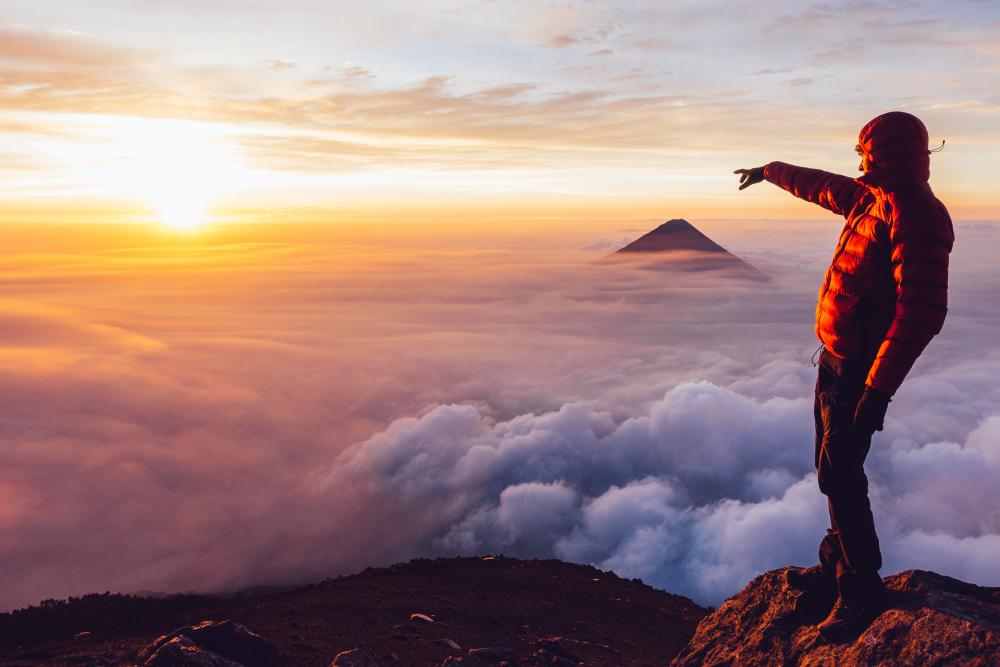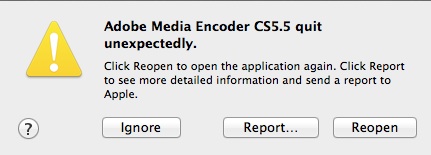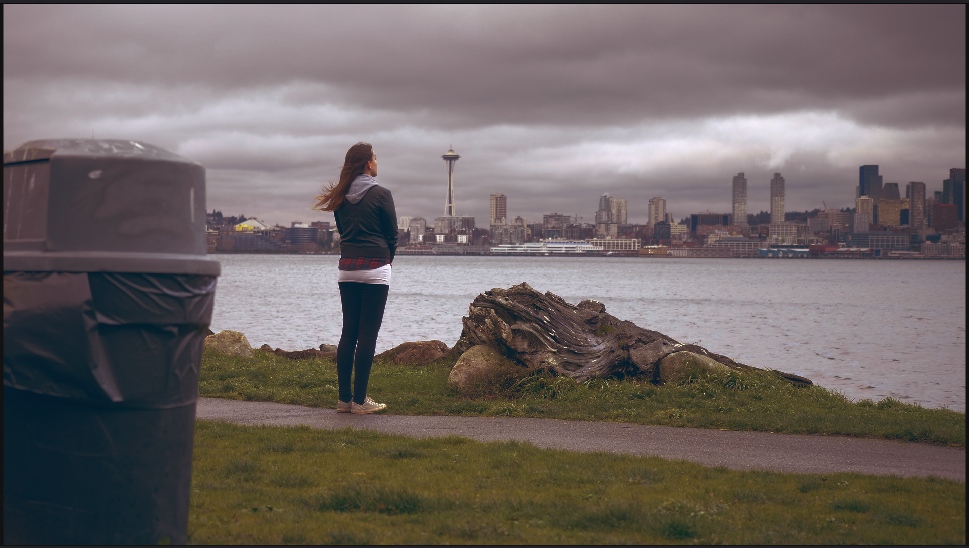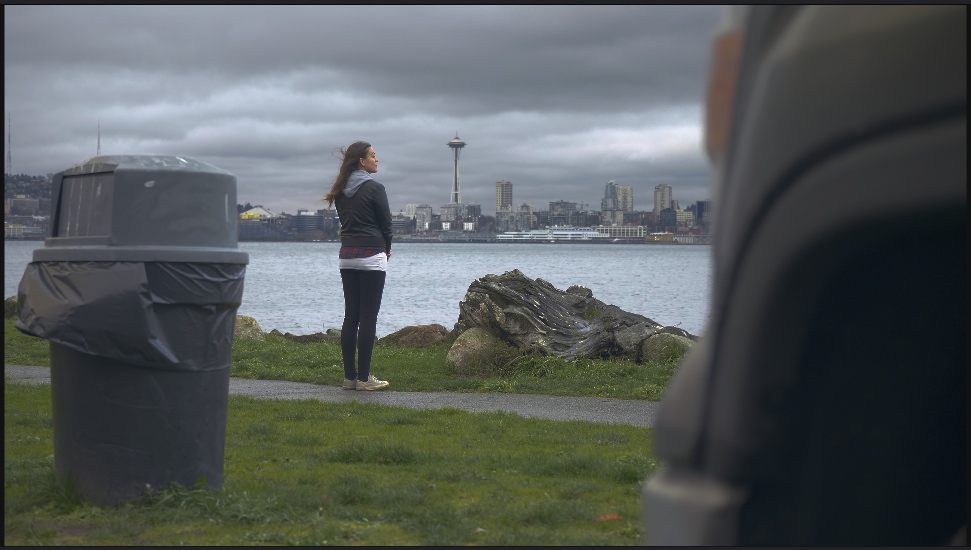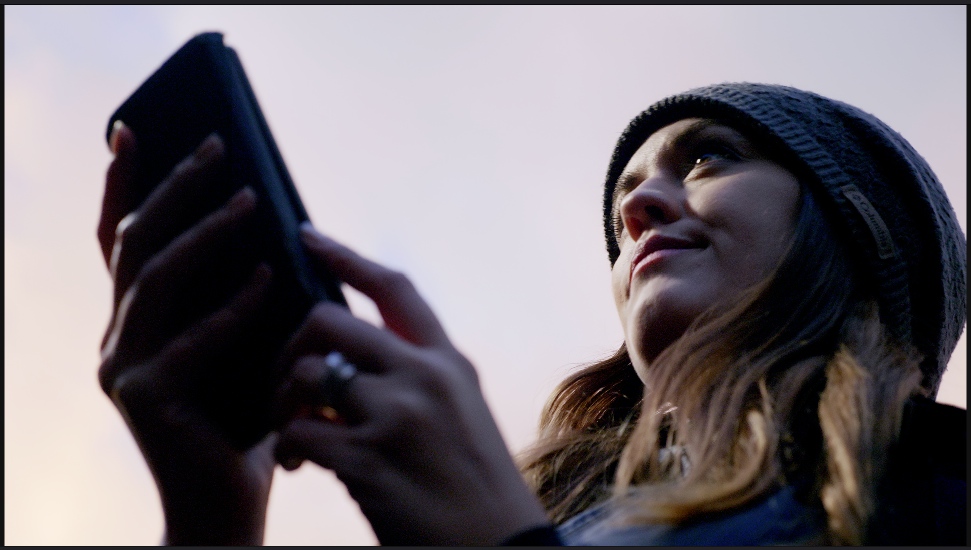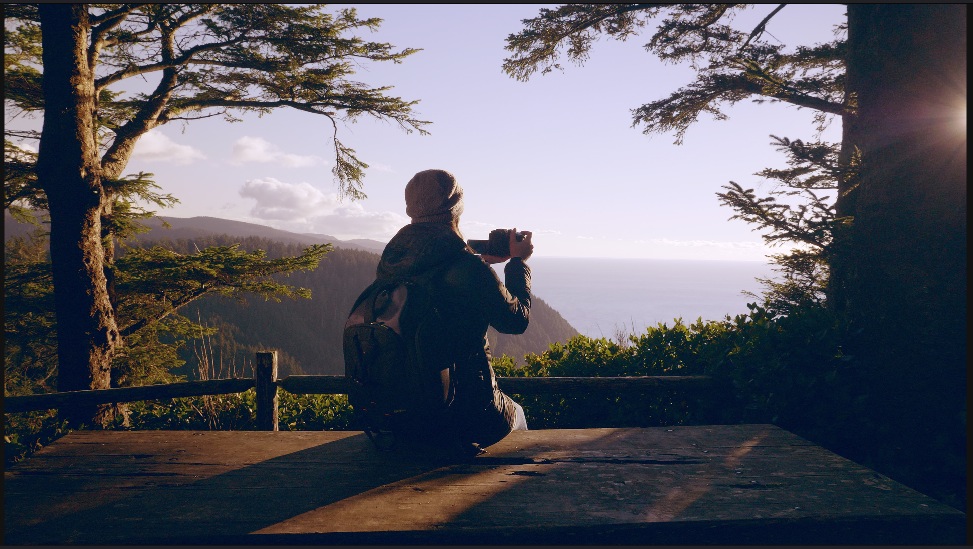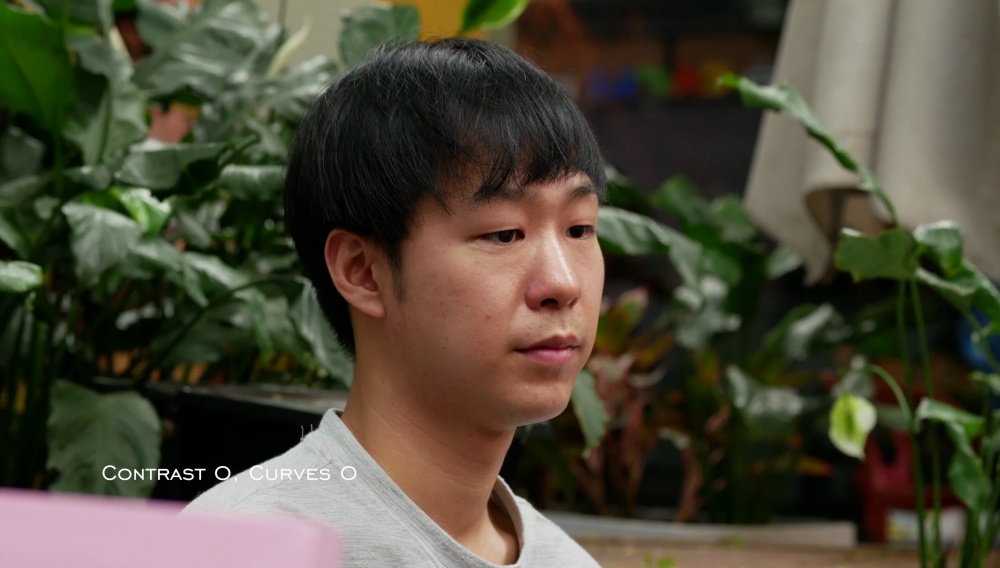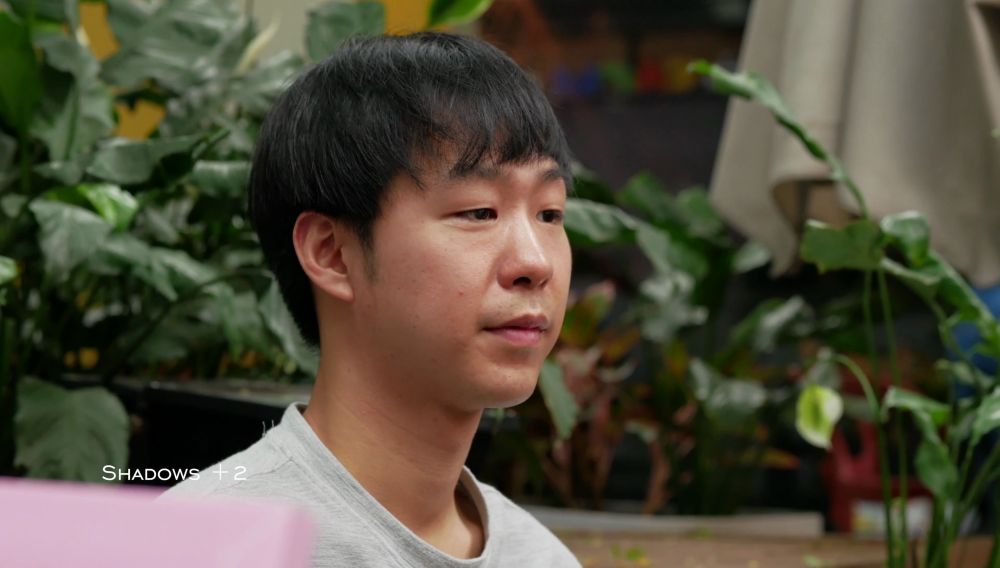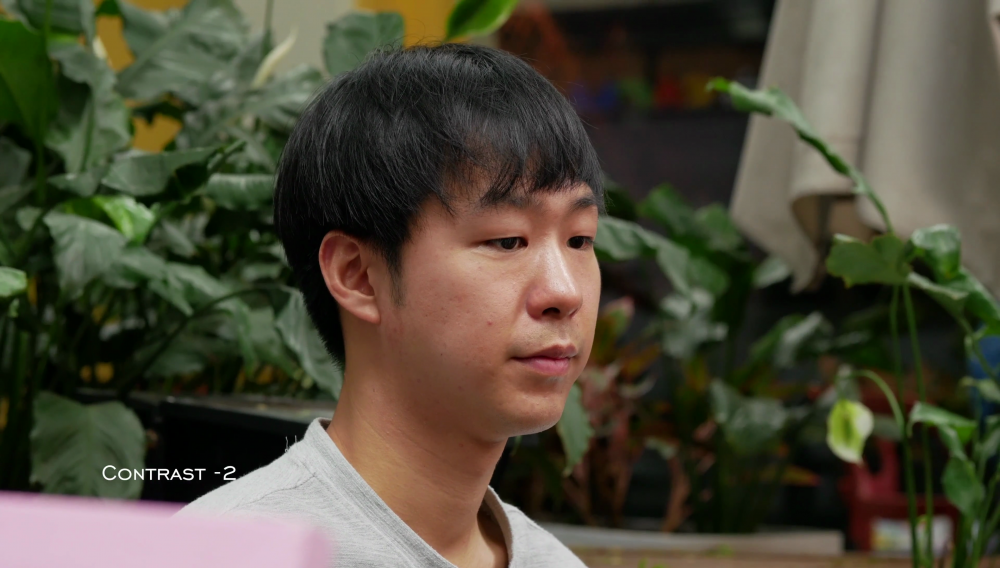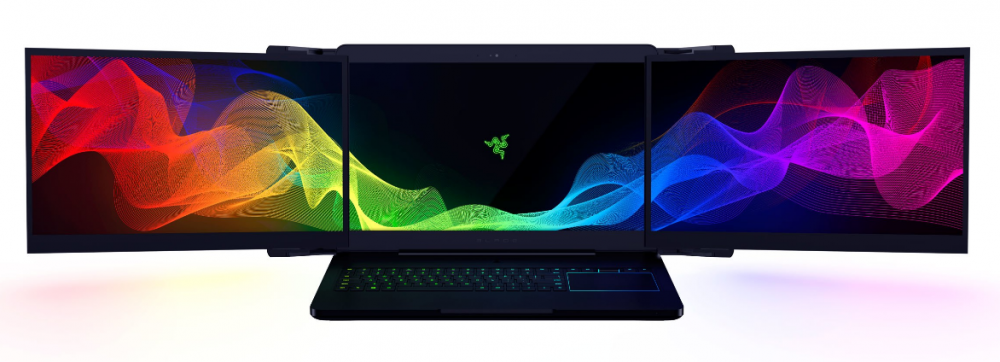Leaderboard
Popular Content
Showing content with the highest reputation on 01/09/2017 in all areas
-
Panasonic GH5 - all is revealed!
Adept and 3 others reacted to Brian Caldwell for a topic
The 0.64x Speed Booster XL and 0.71x Ultra are both designed to cover fullframe 4:3 format (21.6mm diagonal). As long as you use a master lens with a sufficiently large image circle you wont have vignetting. 24x36mm format lenses will always work. I expect some issues with certain APS-C lenses. Well, you would be slightly hampered by 4:3 if shooting with 2x anamorphics. But with 1.79x anamorphics on the other hand . . . . .4 points -

Handheld Shooting
Chris Oh and 3 others reacted to Raafi Rivero for a topic
The cheap stabilizers like the Glidecam, etc can give smooth shots but take a long time to balance the camera. Something like that works better for cinema-type shooting where every shot is planned and the extra time to set things up is built into the day. The other disadvantage of those type of stabilizers is they really wear out your wrists and are annoying to use for more than a few shots. Monopods are good for stability, not so good for freedom of motion. If you imagine yourself following a character around or doing any sort of run-and-gun then these aren't a great solution. The are great if your style is to get lots of different static frames in a day and you'd like to improvise. But if your talent tends to move a bunch, or you don't know exactly what to expect then the monopod will not always be the right tool. Gimbals obviously give great stability and the newer ones are easier to balance. Ergonomically, they do wear out your wrists and lower back because all the weight is in front of you. And unless you also want to invest in remote follow focus, then you'll have to plan your shots to always be at single focal lengths. Not a huge concern depending on what you shoot, but a limitation nonetheless. The "holding the strap around my neck" technique works well for a couple shots, but doesn't feel good for a whole day of work. Your wrists and arms eventually tire out, and the image starts to get shaky. If you plan on getting a shoulder rig, the key thing is to make sure it has enough weight behind the actual shoulder. A lot of the cheaper ones have a shoulder pad but require you to hold the camera up in front of you which, wait for it... wears out your wrists and lower back. If you're shooting the whole day you'll tire out and the images will start to get shaky. A properly balanced shoulder rig, with counterweights behind the shoulder, though heavier, will yield smoother shots and won't tire out your arms as much. Shoulder rigs also have the advantage of leaving your hands relatively free to make focus adjustments, and giving you a wider range of motion. The trade-off is that you don't get magical steadicam-like shots. You get handheld. Good handheld. Here's a piece that was shot with a Canon DSLR, and almost completely on a shoulder rig. There are a few super shaky shots in the nighttime intro that were without the rig, but pretty much everything else except the two tripod shots was with the rig. It's not steadicam, but it's smooth enough to tell the story. And you can tell from the "right there" improvisational feeling of everything that I wouldn't have been able to get most of those shots any other way:4 points -

Your ideal NX1 Settings
Juxx989 and one other reacted to August McCue for a topic
All NX1 + Helios 58 f22 points -
2 points
-
My opinion is that Panasonic colors are accurate and close to what an eye sees. Usually no need to add red. Canon colors are too sweet and warm and little unrealistic.2 points
-
Yup that's the one... but I think the 810 and 750 are pretty similar for video.1 point
-
If the source is right: "The new 12-35mm F2.8 II ASPH. POWER O.I.S. and 35-100mm F2.8 II POWER O.I.S. now have a black finish. They also have new iris mechanisms that are supposed to give smoother aperture transitions when shooting video. One bit of good news for owners of the existing versions of the 12-35 and 35-100 is that those lenses will get a firmware update at some point to make them work with the Dual I.S. 2 system."1 point
-

Biggest clusterfuck of 2016
Kisaha reacted to webrunner5 for a topic
Yeah he is a Jackass on DPR also.1 point -
Think that was the d810, if I'm thinking of the same one1 point
-

GH5 IBIS With Panasonic Lenses Only?
Orangenz reacted to mechanicalEYE for a topic
He means Dual IS, the IBIS has been confirmed to work with non lumix brand lenses. Luke has stated that he's used a Sigma lens on the GH5.1 point -
Biggest clusterfuck of 2016
webrunner5 reacted to Kisaha for a topic
Saadawi is giving his "wisdom" in dpr forums I think, and post in articles and the such.1 point -
Biggest clusterfuck of 2016
webrunner5 reacted to mercer for a topic
You ain't kidding. I bought and tested so many cameras this year I want to cry. In the end I am going to sell them all and get a BMPCC. But first I need...? Seriously though, if you or I can't make a good movie with a 70D, the GH5 isn't going to help us either... in the end, story is king. Character arcs and themes lift stories. With indie, streaming cinema the camera used is such a microscopic part of the equation. Casey Neistat is successful because he is himself in an unapologetic way... and his wife is hot. I admit I enjoy his vlog. I enjoy the way he tells his story. Good for him for the deal. Hope he shoots his new show with a couple 70Ds too.1 point -

Biggest clusterfuck of 2016
enny reacted to mechanicalEYE for a topic
I'm pretty sure you just described Trump. ( more of a celebrity than a politician, he's smug, etc etc. ) hahahahaha1 point -
Moral of the story... cancel the GH5 preorder and buy a 70D?1 point
-

Biggest clusterfuck of 2016
webrunner5 reacted to Don Kotlos for a topic
I think I saw Ebrahim with a 5DmkIV trying to film Donald, only to realize that Canon tricked him with a disguised 7D from 2009. On the bright side, online streaming is the future and that couldn't be better for independent filmmakers.1 point -

Handheld Shooting
Stanley reacted to Raafi Rivero for a topic
Here's a pic of the rig. It's all spare parts or different things I picked up on eBay or at B&H - at least 3 different brands for the top handle, shoulder pad, rails, etc. I have a follow-focus but it's not pictured, and probably didn't use it on that shoot. On the back is a Ken-Lab KS-6 gyro stabilizer. It does help stabilize things a little bit, but it makes noise and the battery runs out after about an hour of use so it's mainly just a counter-weight on the back of the rig. @mercer - it wasn't ML Raw, just plain-old h.264, but I did use a LUT from Vision Color in-camera, and another (light) pass on color in post.1 point -

Lumix GH5 Downloadable Footage
JazzBox reacted to Ronnie Amighetti for a topic
Always remember to download each and every OSX update. Don't install, just download it and then trash it. You're then gonna find it in your App Store archive.1 point -

Panasonic GH5 - all is revealed!
Adept reacted to Philip Lipetz for a topic
The f1.2 will have a firmware update late in 2017 to make it Dual IS 2 compatible.1 point -
This is a really really nice camera but I'm going to sell it. I just can't get on with the FAS .. I hate it I've tried over the last few weeks but it's just not happening. First camera I've ever used with an FAS and I didn't realise how much different it would be for street shooting compared to using tilting screen. I find the tilting screen so much more stealthy. Guess its just personal preference as most love a FAS. Anyway, I have my GX851 point
-

Lumix GH5 Downloadable Footage
a_reynolds reacted to Ronnie Amighetti for a topic
Had to test the files out, couldn't resist. Well, without transcoding my iMac 5K almost dies with just one single clip. FCPX 10.2.3 I throw a VLog to REC709 LUT and played with it a bit. FilmConvert plays funny with colors. Guess we'll have to wait for a proper GH5 profile.1 point -
1 point
-
FCPX 4K DOWNRES ISSUE
Ronnie Amighetti reacted to Axel for a topic
Very good thinking, Ronnie. I never tested this myself, but you're right: trust your own eyes.1 point -
Panasonic GH5 - all is revealed!
Rinad Amir reacted to Axel for a topic
Or daylight. The right lens is half the battle. Owned three original MFT lenses with GH2. Two of them (Pana, Oly) were directly responsible for a 'videoish' look. The third, the Nokton 25mm, was beautiful for HD, but maybe not sharp enough for UHD. The Sigma would be my first thought. Because I have a gimbal, I'd need a good lightweight AF lens as well. This might turn out be a hard choice. I didn't follow discussions on MFT lenses for a long time. Need someone to bring me up to date.1 point -

FCPX 4K DOWNRES ISSUE
jonpais reacted to Ronnie Amighetti for a topic
Don't get me wrong, I always dragged 4K right into the timeline and couldn't notice anything strange. In fact if I had to give it a number I would say the quality difference is in the order of 1% or less. It just came to my attention because I was curious to see if there was any difference in working with the original files compared to the ProRes422HQ and that's what I found out. After reading around about the theory of downsampling 4.2.0 4K down to 1080 and getting sort of 4.2.2 I was curios to see if there was any gain in grading and color correction. That's when I discovered the sharpness difference between the two. I was looking for something completely different (banding and grading). Coming from the audio world, I'm used to comparisons and tests so the first thing I did was putting the two clips on top of each other and set the composing to difference, just like I did thousands of times while testing audio plugins (we usually invert the polarity of one signal to listen for artifacts). That's where I noticed that colors where basically the same, but there was a noticeable difference in sharpness. It just ticked my curiosity. That's all. Nothing major to be concerned I guess.1 point -
Panasonic GH5 - all is revealed!
Axel reacted to Rinad Amir for a topic
Cant wait to see what ultra sb combine 18-35 1.8 in lowlight1 point -

Lumix GH5 Downloadable Footage
Neumann Films reacted to Matt Holder for a topic
Shallow depth of field was a winner with 96fps on the GH4 - it seems like the lack of required sharp detail encoding allowed the sub optimal bit rate to be good enough - plus its softness was good for skin / faces. I used this all the time for handheld dollies / close up product detail shots at 12mm / f2.8 Panny is 25-35 or 25/ F .095 and never got called out for image softness by any of my clients. Philip Bloom had a great shot in slomo of a young girls face close up with the GH4 / 25 voigtlander combo that he used in his CNN series. Its one of my favourite shots of his ever. I suspect the same approach will work wonders with the 180 fps mode.1 point -
I get 3 batteries for the drone. Multiple batteries for the cameras and also 2 bank power of 13000mha each for my phone which will be the GPS and any camera that can be usb charged (RX100 for exemple). I will have all necessary safety gear for sure. Here is a picture of me on the summit of a volcano, 4000m altitude. I did not have any drone and regretted this more than ever. Imagine the drone footage here... (click on image for better quality, photo done with RX100. Similar one without me on my gallery done by the Nikon. See how much better, cleaner and nicer is the Nikon one) The thing below my hand is another volcano. That was in Guatemala. There is another volcano on the right that we dont see on the image. Super active. A picture is in my gallery: https://500px.com/photo/168838135/fuego-on-fire-by-loup-fsr?ctx_page=1&from=user&user_id=860266 We spent the whole night camping in front of it, at 3600m before summiting before sunrise. Never regretted that much not having a bloody drone with me to fly above the eruption. Would have been a world class incredible footage. Damn And by the way the 5200m we did in Bolivia was a preparation Trek for summiting a 6100m summit which we did not do cause a friend broke his collar bone and got surgery in La Paz. Thats the reason why there is actually no video of this Guatemala/Bolivia trip even though I have tons of footage (erupting volcano timelapse anyone..? )1 point
-

Lumix GH5 Downloadable Footage
Neumann Films reacted to aldolega for a topic
So it would basically be the same rule it seems most have adopted for the GH4- stick to normal gammas with 8-bit (in-camera), and use 10-bit for V-Log (i.e. add a recorder). Just with the GH5, going to 10-bit is only a matter of switching a couple settings, instead of dragging out the recorder, and the SSD's, and the HDMI cable, and the rigging... Sounds like I will just be setting one of the custom modes on the dial to 4K60p with Cinelike D at Leeming LUT settings, and another to 4K30 with V-Log and the preview LUT. Should be pretty simple to switch between them. As someone who shoots a lot of motion, the only things I'm worried about are the possibility of ghosting from temporal NR, and the haloing that @anti12 just posted is worrisome too. It seems like with every GH release the engineers do their best to deliver the most nail-bitingly-sharpened-and-processed image they can, and we all spend the first month or two with the camera just trying to dial that out of the picture. It would be really nice if, right off the bat, we could have the option to not just turn down, but turn off the extra processing and NR, instead of waiting/hoping for a firmware update that lets us do so.1 point -
I have Color Finale and it is a great tool with a lot of support from the maker at Color Grading Central... Denver Riddle is his name and he sends a shit ton of emails. Hah. What is really great about it is that it is the simplest layout for pro color tools. I used that before I ever tried Resolve and Color Finale spoiled me because it's so simple. I probably should have watched all of his tutorials, but I tend to lack patience and prefer to tinker... probably a big reason my coloring skills are lacking. But seriously, Color Finale is great and well worth the price. I think there's a pro version now as well and the newer version has an X-Rite color checker tool that is supposed to work great.1 point
-
You can't be any worse than I am and it doesn't stop me from using CineLikeD. I think Andrew made an interesting point the other night in the GH5 download thread about coloring log and that it takes people thousands of hours to be any good at it... Damn... I don't have thousands of hours and I don't want to be a colorist. I respect the craft and I want to get nice images but in the simplest way possible by utilizing the most DR I can. So with that realization, I started wondering why I am trying to understand nodes and telecine wheels and curves when I can instead use simple slider tools from a program like Mojo II and get better color results in 3 minutes with what used to take me 10-30 minutes. I still have to get better with the program and calibrate my monitor, or get an X-Rite chart, but for someone like me, I think it makes more sense.1 point
-
Base ISO is important for me. I won't do night shooting or very little because the camps wont be in the good spots, and because weather is so shitty that it often can rain in night even if forecast say otherwise (so can't let camera outside the tent). Also to make dynamic timelapses I need to zoom in the image a lot so no A7SII for timelapse. I had a 5D3 for a year which I hated. Couple images in my gallery (see first post) with it. DR was so horrible that it was always a pain to edit dramatic landscapes. D5200 400$ camera has been a relief vs 5D3. Understand that I don't care much of DR for the timelapse itself. A 6D is fine for a timelapse. I care of DR for the single RAW that I will extract from it, work 2 hours on photoshop to get a nice image and then sell. for weight : d810 is 880g, d7200 is 680g and d5500 is 450g. But with d810 you have a 1000g lens (14-24). An APSC tokina 11-20mm 2.8 is 550g. Overall 700g gain with D7200 and almost a kilo with D5500. When I know I spend 200$ more in each hiking piece of gear to win 100g over other gear... Worst than this the gimbal is 1kg. But I don't see myself without a gimbal anymore it gives so nice dynamic footages. Since I won't have many subjects except my buddy running in the rocks, having the gimbal allows for more dramatic shots. Statics shots in mountain are boring. The best weight package overall would be : D5500 for timelapses on my carbon tripod RX100v on gimbal for all videos with 80% 120p and 20% 4K Other option is A6500 instead of RX100 and or D810 instead of D5500. Main advantage of A6500 would be Deepth of field shots vs the RX100. But then I would need a special lens like a 35mm 1.8. But then why not use the Nikon body for that.. So I can let's say bring a 35mm 1.8 for the Nikon and shoot nice 1080p60p with it on the Nikon for potential DoF shots.1 point
-
Now that was a great tip. It actually works ....and no need to downscale. Same CC as above slightly adjusted levels. Same... same CC + slightly over the top color grade. Same color grade node applied to seattle... I'm really impressed by the internal 10 bit Vlog. It can only mean that Cine D will be great. What stands out the most for me is the beautifull grain, almost BM-like. Gone are the days of fluffy grain clouds dancing all over the place ...at least if this is an indication.1 point
-

The next Blackmagic Pocket or Micro Camera?
Ricardo Constantino reacted to Cinegain for a topic
We need conversion kits. Hardware hackers. To take a G7, strip it and fill it with BMPCC internals. :P1 point -
The aperture is not moving in photo mode until you take the final image. It stays fully open for focusing. If you use manual photo mode (M) and "Constant preview" from custom menu the aperture changes when composing an image. The "Constant preview" is always ON in video mode. Can this be your issue? Can I ask is there aperture auto exposure stepping with Pana lenses when using video mode S in GX85?1 point
-
Anyone know anything about the GH5's hybrid log-gamma HDR mode and how much, if at all, it extends dynamic range?1 point
-
1. The files transcoded by MSC match the timeline settings. They are played back as they are. Playing back HD ProRes (no matter the flavour) is the easiest thing for any Mac. 2. No matter if you chose Better Quality over Better Performance in the viewer, FCP X will always scale the quality down to give you realtime experience. It says better quality, not absolute quality, it's literally a preference of one over the other, not an exclusion. 3. Therefore, it's normal that HD ProRes looks somewhat better than 4k mpeg4 *in preview*. Put the same clips side by side in your timeline, export them and then compare! 4. Mpeg Streamclip does not have it's own ProRes encoder. It's just an interface that let's you define the codec for export, but it uses QT, the same module that FCP X and Compressor use to transcode. No difference to triggering the process as background task from within FCP X. Only that this would have been more practical and smarter. If they also play back equally smoothly in 4k, there wasn't any need to use optimized media anymore. Anyway, everybody's experiences with ProRes are that it's visually indistinguishable from the original. Just believe it and try what I suggest under point 3.1 point
-
The moonlit shots with the camels were great, nicely done.1 point
-
Hardly meaningless.... 10bit 4:2:2 log is capable of capturing the full DR of a sensor, if implemented right.1 point
-
I downloaded the 4k file and made some screencaps for anyone who is interested: To me, they are pretty near to each other, e.g. I dont seen any night / day like difference (if you guys do, maybe thats actually a thing that I dont see it, means I am easier to please :D). However, I believe that the highlight rolloff and shadow detail is best on Contrast -2, but then again I stared at those screencaps for quite some time...1 point
-

Panasonic GH5 - all is revealed!
Orangenz reacted to Andrew Reid for a topic
That would explain it. Panasonic think I am a girl! Maybe I need to shoot my parkour and dogs before EOSHD can get a pre-production unit. Remember when they gave me a GH3... and a GH4... and invited me to feedback sessions... This time - nada. Maybe it was the Panasonic CM1 smartphone review?!1 point -
Kodak to bring back EKTACHROME film
webrunner5 reacted to Mattias Burling for a topic
Maybe Kodakchrome could come back but it wont. What was it, 7 baths or something to process and an archival lifespan of just 20 years? I dont know many Hipsters that shoot film. Frankly I dont know any, they are a lazy bunch. It smore for people who really enjoy photography and film making as an art imo. I believe the reason its coming back is because after all these years digital still can't beat it. Digital is nice but film is nicer. Every time I watch a Blueray of any old movie I blown away of how much digital suck in comparison Also digital large format doesnt exist and medium format is still out of reach for most. A film MF is $7. (This of course depended on your definition of "better" and what aspect of image quality you rank highest.) Ps. Fun fact I heard but dont know if true, Fujifilms Instax division is currently their most profitable business... I know Im throwing money at them for my Instax printer1 point -
I must admit I completely dislike at least 95% of other peoples graded shots. Not because I think I can do better, it's probably mainly (but not exclusively, see below!) a matter of taste. My own attempt, with explanation: On top of Panasonic V-lut (usually not recommended) I desaturated the shadows and also (like mercer) added some blue to them, but not so much. Is her jacket really a very dark blue? I substracted some magenta globally, thereby unwillingly adding more green to the trees, but fortunately the muted shadow saturation counteracted this (don't like the green in any of the shots). I boosted the saturation of the midtones, I like vivid colors, but not to the degree that the image looks artificially colorized. I admit I am not good as far as serious grading is concerned. I think I know a lot about it in theory, probably more than most here. If you say my version is terrible, you are probably right. Do better, show, explain. The point of this rant is, people - including me - can't grade. So why are they considering log the Holy Grail? I'd rather have a picture style that spared me all those steps and just left some color correction (which isn't a matter of taste and an artist's "eye" but merely cooking by the book with scopes). I would really love if the skin looked better. It's not wrong, it has the right tones, but it has too few nuances to look really alive. It's a pity that the above face is not in 10-bit, I'm curious to see if that made a difference.1 point
-
I am not sure I could be able to edit the best of the GH5 files right now, and I wouldn't like to change all my hardware this year (2500euros for the GH5 kit is nothing versus the investment in editing hardware). My most serious issue with NX right now is the low light performance in video, obviously the sensor is better than that. From early footage it seems that 3200 GH5 is more usable than NX 3200. The codec doesn't seem too efficient either. When the GH4 was out it was the must buy for video orientated people, now it is GH5, like then I waited for something different, and NX delivered. Until I decide move on to GH5 I can see someone else offer a more suitable and more mature camera (Fuji?Canon?Nikon?even a7000 Sony?). Also, I do not see a similar all around lens in any system like the 16-50S, this keeps me firmly attached to the system for now. p.s Is anyone going to review the NX-L ??!!1 point
-

Is anyone moving to GH5? (non provocative question)
webrunner5 reacted to SMGJohn for a topic
It seems the camera industry is moving away from enthusiast photographers to professionals for full steam now, the reason why I think the NX series did so badly is because they were targeting regular people like smartphone users instead of the professionals. I come to a point in my life were having the latest and best is vanity, I had my Xperia Z for almost 4 years now and I see that I rarely use it for much else than what you would not be able to do in a low end device anyway, sure it may not have the fastest processor out there and not the greatest camera even for its own class back then, but it gets the job done. The same goes for my camera, its materialistic obsessive to continue purchasing newer and newer products because you want the quality to be superior, its not true a good camera wont make you a good photographer, its the way you use that camera that makes you a good photographer, whether your work turns out good or not. I seen modern Chinese movies shot with 16mm Soviet cameras you can get off eBay for like 80 dollars and these movies have better cinematography than most Hollywood movies and they were a lot more enjoyable story wise too. GH5 looks like a good camera no doubt and price wise is very good as well 1999 dollars for such great features? Its a steal if you ask me. But I too used to be like "Quality matters" but I had time to use my NX1 now which in a few months now is almost 3 years old, think about that for a second, over 2 years old and still produces excellent images and video, the hack has also done a lot for us but it would been even better if they managed to make it spit out MJPEG's with little to no in-camera processing specially making it shoot 2160p60, but I wont complain they did an excellent job non the less. I for one wont be upgrading for a long while, this camera will stay with me for at least 6 years in total, and one day I will use it for a full feature film, I grew up with Soviet cinema and I know that masterpieces are not dependant on camera equipment but only the ingenuity if their production crews. This does not mean a shitty Nokia phone camera is the tool for the job, there is of course a limit and there always will be, for photography most pro photographers seem to say that around 4 to 6 megapixels is really the sweet spot for digital delivery but if you go print you must go higher, 1080p seems to be that sweet spot too, even though 35mm produces up to 6k digital prints if it is low clean ISO film, 1080p still looks great even on a big screen but for me 2k is minimum in a cinema, most cinema projectors are only 2k too. Its been a while since 4k has been out and overall the adoption of 4k screens is very slow still, 1080p came out for the first time in the late 80s, you can start to imagine now how long it will be before 4k is universal standard for everything. They did not even start to get serious about 1080p until 2006 when Blu Ray was being released despite there being a delivery format that supported HD delivery in the 90s like the D-VHS and MuseLD. Another thing I noticed, majority of movies and TV-series are produced at low cost and quality is not generally very important, often they just rent big 4k cameras without giving much about its capabilities as long as it just shoots the resolution they are happy enough. Also most Hollywood films these days are shot behind green screens and more time is spent in the editing rooms than the scene. A good camera is not essential these days even in the industry as most movies uses low range colours and shadows and purposely crushed, video for TV are usually decapitated before being broadcasted in order to limit the bitrate they often kill colour depth and destroy dynamic range to fit it in the standard hence they end up looking very greyish.1 point -

Panasonic GH5 - all is revealed!
highres reacted to Zak Forsman for a topic
if the BMPCC speedbooster fits, like it does on the GH4 for those brave enough to try it, that'll get you to a 1.10x crop.1 point -

Tons of problems with new Macbook Pro
Mat Mayer reacted to Don Kotlos for a topic
1 point -
Regardless of using Procolor, I DID notice a serious problem with contrast at -5 in really flat, softbox light. It gave me and my daughter a strange skin condition that I don't have. I've decided to go to with contrast at 0 since it doesn't really impact the final image negatively... at least I can't see it. Anyway, it fixed the problem.1 point




